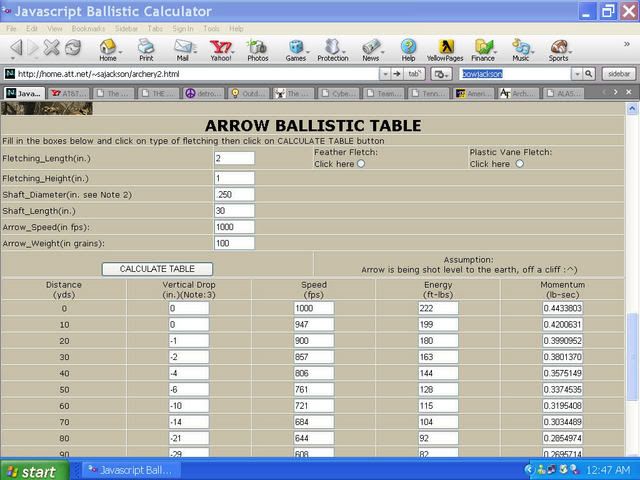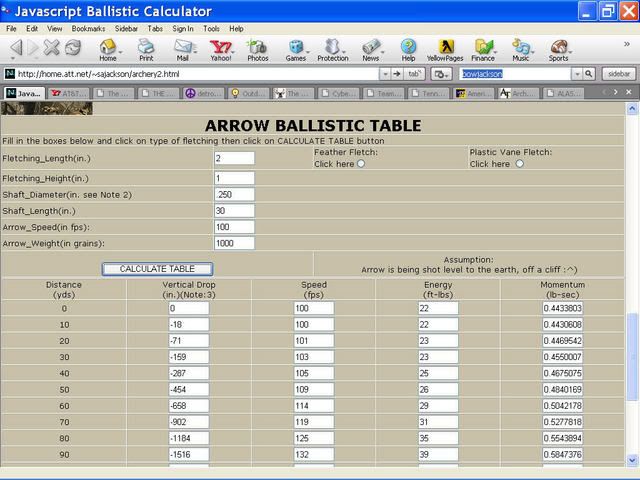|
|
Post by BT on Jul 12, 2007 16:39:39 GMT -5
Can you back that up with FACTS please? Because I've always been taught that to get a clean cut, the angle of a razor blade will cut easier with a smaller degree angle. With that in mind, a head with the blades angled at a smaller degree should penetrate better. I won't base that on scientific principle just yet, but logic abounds here.  ;D  I agree with that statement Michi and as usual you have caught me in a snare ;D I will not contend that a 2/1 will out do a 3/1 on flesh but on solid bone....anytime....the facts are here. The reason is that the total resistance is at a ratio of 3 to 1 whereas the ratio is 2 to 1 with my suggested head. The 1 to 1 therefore should do even better then....right?....wrong  Due to the slope , the 1 to 1 ratio heads are subject to the same area of contact as the 2 to 1 ratio heads but with the disadvantage of comparative near blunt impact. When hard bone is the issue we have to concern ourselves with leverage and minimization of contact. With the 3/1 ratio we have increased contact although we have good leverage. If the theory did not apply then a 4 to 1 ratio would be the best of all but as we know....this is not the case because of that same drag. I concentrate on worse case scenarios and have seen a substantial amount of bone penetration where the 2/1 ratio head always prevails given the fact that the blade is undamaged. A damaged head provides even more resistance so it is a wash as to which head had the advantage in this case. In truth...theroretically .... for a damaged head the 1/1 ration might actually do better than either the 2/1 or the 3/1  |
|
smj
Forum Guide
  Traditional Council
Traditional Council
Posts: 1,819
|
Post by smj on Jul 12, 2007 17:35:34 GMT -5
...Broadheads were single edge affairs so the effect was more of a spear chucking affair. Single edge affairs? Is a Stinger without the bleeder blade a single edged broadhead? All the stone heads I've seen from 250 years ago have an edge on each side of the tip - two edges if you were to calculate the TPI for one of those arrows! Also, Saxon Pope did a test to see what type of tip had better penetration: Howard Hill style metal one or a stone tip chipped out by Ishi. To test, they filled a cow hide container with beef livers and shot the same arrow with a different tip from the same bow. As close as they could manage anyway. The stone tip won hands down. Was it added mass, or just that much sharper, or something else? Something from one of the bowyer bibles comes to mind - something to the effect that just because it is an ancient weapon, it does not mean that it is crudely made or has to look crude in any way. Take care about calling those folks knuckle draggers... There were some very intellegent people who figured all of this out, and how to do it all without a nice shop in the garage to work in... Or a degree in physics!  |
|
royden
Senior Board Member

Posts: 1,349
|
Post by royden on Jul 12, 2007 17:57:02 GMT -5
We can start with this  You must either: Stand in front of a 1000 kg. truck moving at 1 m/s, or Stand in front of a 1 kg. meatball moving at 1000 m/s. What's your choice? Hopefully, you picked the truck! It's a big truck, but it is moving rather slowly (about walking speed), so assuming you don't fall down when it hits you (That would be bad...) the truck is just going to bump into you and move you out of the way.  This is an interesting thread ... I haven't been paying too much attention lately so... maybe michi already hit on this. My .02. I would rather be hit by the truck cause it would move ALL of me out of the way; while the meatball (or perhaps a leadshot weighing as much as meatball  ) would go right on thru me and leave a hole whereby I get killed. On the other hand if the truck had the same diameter as the meatball it would go much farther than the meatball after it went thru me. The meatball would have lost most of it's energy (I suppose  ) while the truck wouldn't even slow down. In other words the "footprint" of the object in motion must also somehow be taken into consideration. |
|
smj
Forum Guide
  Traditional Council
Traditional Council
Posts: 1,819
|
Post by smj on Jul 12, 2007 17:58:32 GMT -5
Today the same weight bow is capable of shooting arrows 1/3rd of that original weight and I contend that the majority of people are guided (wrongly) by shops to purchase arrows with the wide spine range to make up for their inability to properly council the potential buyer. Multi blade heads are now all the rage so therefore you end up with people shooting area's of mass that are triple (due to the wedge effect) with momentum losses of 300%  The fact is that we should care because most wounds are going to be inflicted due to the lack of general knowledge towards traditional arts as is the case with modern archery. The differences being that the high majority of modern shooters will never know the true gains and losses due to the fact of the bows weight and efficiency. I can not dissagree with you here. The current push on trad bows seems to be more about speed than anything else, carbon fiber lams really do add to the bows speed. Hill said that you could not shoot a draw length over 28 inches for a powerful hunting bow because you could not get the spine right. Well, now we can! We have arrow materials that will take it. Also, we can draw farther and use a lighter arrow as the bows made with such compounds and the correct glues will not come apart. Hence, folks try to shoot the same weight arrow that they would use out of the compound - and they get a fairly flat 20 to 30 yard shot. I question the worth of it in a hunting situation, even more so depending on the tip used. |
|
|
|
Post by michihunter on Jul 12, 2007 18:05:31 GMT -5
Very good point Royden. I was thinking the same thing. Tip each with a broadhead and see which one would stand up to x amount of bodies!! I'd say that truck going 1 mph would be pretty hard to stop!!  |
|
|
|
Post by BT on Jul 12, 2007 20:20:21 GMT -5
This is why formulas don't work. Assumption always outwits it  lets make a meatball weight the size of a mac truck and launch it at you at 1000 mph while the 10,000 truck still hits you at 1 mph. which is going to kill you? ;D The application of mass on a set size area does change things but only to the outcome of the work load. If you were hit by a 10,000 pound arrow at 1 mph the arrow would travel as far as the initial forward motion would carry it. That would be about 6" I'd guess since 10,000 of anything comes to a rather abrupt stop once force is removed IE the bowstring. Now take the 1 ounce arrow at 10,000 mph ..... that thing would kill 1000 men before it came to a stop ;D |
|
|
|
Post by michihunter on Jul 12, 2007 20:56:35 GMT -5
I think you may be surprised if you punched those numbers into a calculator BT. Remember, momentum is the time it would take for the mass to stop..  |
|
royden
Senior Board Member

Posts: 1,349
|
Post by royden on Jul 12, 2007 21:06:34 GMT -5
very easy to test BT - go take your pick-up out of gear and let it roll slowly down the driveway - try to stop it, but don't killed OK? Course it's doubtfull if your pick-up is anywhere near 10,000 (mine comes close  ) You wouldn't be starting to agree with ... hmmm what was his name... the dude that was stating that speed alone created a cutting force for a dull object.  |
|
|
|
Post by BT on Jul 12, 2007 21:19:37 GMT -5
You wouldn't be starting to agree with ... hmmm what was his name... the dude that was stating that speed alone created a cutting force for a dull object.  OH HELL NO!  |
|
|
|
Post by michihunter on Jul 13, 2007 0:00:13 GMT -5
Due to the sites restrictions I wasn't able to come up with a 10k# meatball but here's some reciprocating numbers. I used a 100gr arrow at 1000fps and a 1000gr arrow at 100fps. What stands out to you people? I know what did for me- the increase in fps and momentum with the heavier slower arrow. Hard to gain momentum huh BT?  ;D:   |
|

 I agree with that statement Michi and as usual you have caught me in a snare ;D
I agree with that statement Michi and as usual you have caught me in a snare ;D





 ) while the truck wouldn't even slow down. In other words the "footprint" of the object in motion must also somehow be taken into consideration.
) while the truck wouldn't even slow down. In other words the "footprint" of the object in motion must also somehow be taken into consideration.


